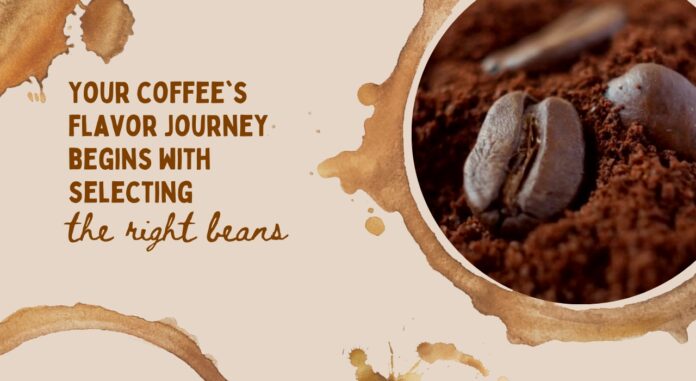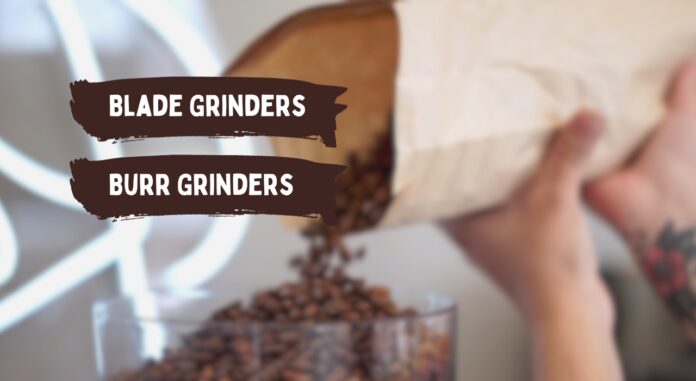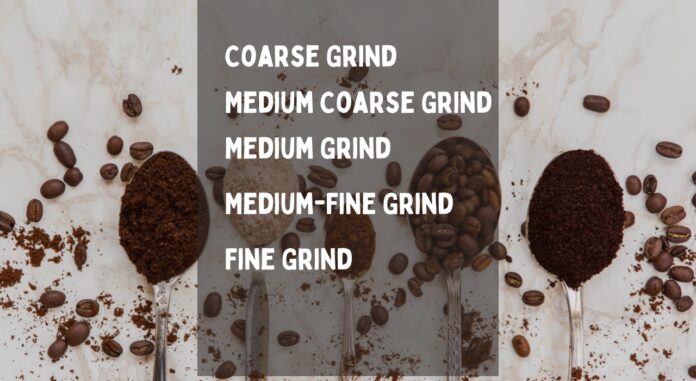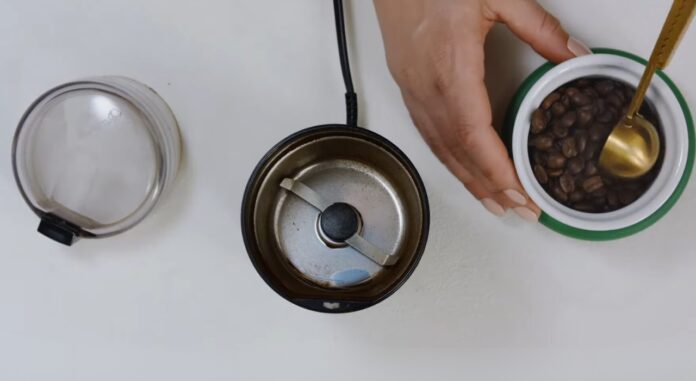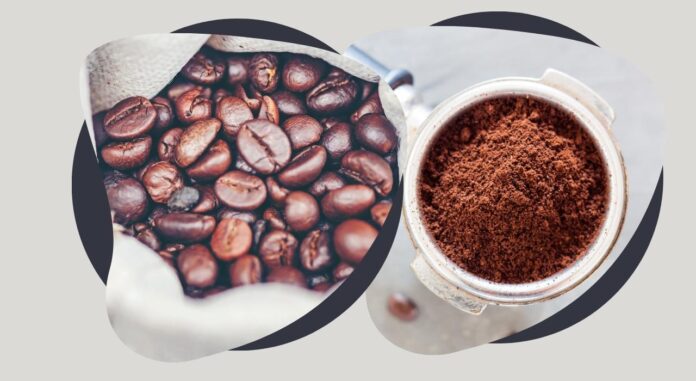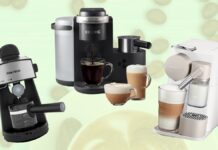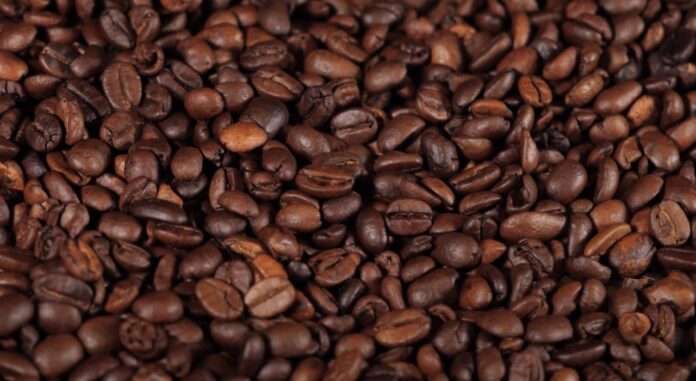
In the world of coffee lovers, one of the keys to a perfect cup of joe is how you grind your coffee beans.
It’s no secret that freshly, finely ground coffee beans can elevate your coffee experience to a new level, unlocking a symphony of flavors and aromas that pre-ground coffee can’t deliver. But to achieve this coffee nirvana, you must know how to grind coffee beans correctly.
The Importance of Grinding Coffee Beans
Coffee beans are packed with complex flavors and oils. When you grind them, you release these flavors, creating a fresh canvas for your brew. Pre-ground coffee, on the other hand, starts to lose its flavor shortly after grinding, so grinding your coffee beans is the way to go for most coffee drinkers.
It’s worth noting that the grind size you choose also affects the extraction process. A finer grind yields a stronger and bolder cup, while a coarser grind produces a milder flavor. Therefore, mastering the art of grinding is essential for achieving your desired coffee profile.
Choosing the Right Coffee Beans
Your coffee’s flavor journey begins with selecting the right beans. Whole bean coffee is your best choice, as it retains its freshness and flavor longer than ground coffee. Look for quality whole beans from shops like Mystic Monk Coffee that match your preferred coffee taste profile, whether bold and dark or light and fruity.
When selecting beans, consider their origin and roast level. Single-origin beans provide unique flavor profiles that reflect their growing region, while a specific roast level (light, medium, or dark) can cater to your taste preferences. Experimenting with different bean varieties can be an exciting way to discover new flavor notes in your brew.
Types of Coffee Grinders
Before diving into the nitty-gritty of grinding beans, you must know the two main types of coffee grinders:
1. Blade Grinders
Blade grinders are budget-friendly and easy to use, making them popular among casual coffee enthusiasts. However, they can be inconsistent in achieving the desired grind size due to their reliance on spinning blades. These grinders rely on spinning blades to chop coffee beans into particles.
While they are suitable for drip coffee makers and French press brewing, the lack of grind size consistency can affect the overall taste of your coffee. To overcome this limitation, consider pulsing the grinder in short bursts rather than continuously grinding.
This approach allows for a more even and consistent grind by preventing the beans from overheating and becoming overly fine.
2. Burr Grinders
Burr grinders, on the other hand, are the choice of serious coffee connoisseurs. They offer precise control over grind size, resulting in a consistent and flavorful brew.
Burr grinders operate by crushing the beans between two burrs, ensuring uniformity in every grind. While they may come with a higher price tag, the quality they deliver is unmatched.
Understanding Brewing Methods and Grind Sizes
Coarse Grind
Coarse grounds are ideal for French press coffee. The large coffee particles allow full immersion in hot water, extracting a robust and full-bodied flavor profile. This same coffee grind size is also the choice for cold-brew enthusiasts.
The extended steeping time of cold brew allows for gentle extraction, resulting in a smooth and less acidic coffee concentrate.
Medium Coarse Grind
Medium coarse grind works well for automatic drip coffee makers. This versatile grind size ensures proper extraction without clogging the filter, producing a balanced and flavorful brew.
Medium Grind
Suitable for flat-bottom drip coffee makers, this grind size ensures a consistent extraction, which is ideal for those who prefer a classic cup of joe.
Medium-Fine Grind
Best for cone-shaped drip coffee makers, it provides a slightly finer texture, enhancing the extraction process.
Fine Grind
Fine coffee grinds are essential for making espresso shots. The fine particles pack tightly in the espresso machine’s portafilter, resisting pressurized water to extract the rich coffee oils and create a bold, concentrated shot.
How to Grind Coffee Beans
Using a Blade Grinder
- Add your coffee beans to the grinder.
- Pulse the grinder in short bursts to achieve the desired consistency.
- Check the grind periodically to ensure you reach the right texture. Remember, consistency is key.
Using a Burr Grinder
- Set your burr grinder to the appropriate grind size, depending on your brewing method.
- Pour the beans into the hopper and start grinding.
- Collect the freshly ground coffee in a container.
- Remember to clean your burr grinder regularly to prevent oil buildup and maintain the quality of your coffee.
Grinding Coffee Beans Without A Grinder
You can still enjoy freshly ground coffee in a pinch by improvising your beans with common kitchen tools like a blender or food processor.
It might not be as precise as a grinder, but it does the job. Add your beans to the blender or food processor and pulse in short bursts until you achieve the desired grind size.
Storing Ground Coffee
To preserve the freshness of your ground coffee, store it in an airtight container in a cool, dark place. Avoid leaving it exposed to air and sunlight, as oxygen and light can lead to flavor degradation.
Additionally, refrain from storing ground coffee in the freezer, as the fluctuating temperatures can introduce moisture, negatively impacting the coffee’s flavor.
Common Mistakes to Avoid
When grinding coffee beans, steer clear of these common blunders:
- Coffee beans start to lose their freshness and flavor shortly after grinding. Aim to grind your beans just before brewing for the best results.
- A dirty grinder can accumulate coffee oils, affecting the taste of your coffee. Be sure to clean your grinder after each use and periodically run some rice through it to remove residual coffee oils.
- Using the wrong grind size for your chosen brewing method can result in over- or under-extraction and undesirable taste profiles.
Maintaining Your Coffee Grinder
Regular maintenance ensures your grinder performs at its best. Clean it after each use, and occasionally run some rice through it to remove residual coffee grounds and oils. This simple practice can prevent clogs and maintain the quality of your coffee.
Last Words
Grinding coffee beans is a crucial step in the coffee-making brewing process, and doing it right can make all the difference in your brew’s flavor. Experiment with different grind sizes and brewing methods to find your perfect cup of coffee.
Whether you opt for a blade grinder, a burr grinder, or alternative methods, the key is to savor the rich flavors that freshly ground coffee beans can offer.

